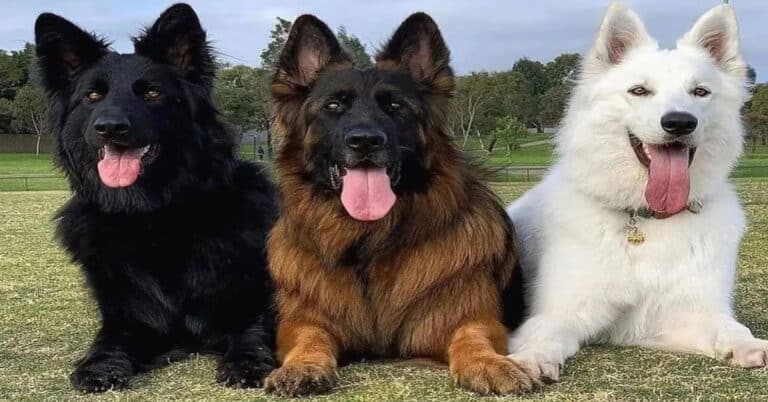Buying a Dog Collar
Whether it is your first dog or your latest addition, buying an appropriate collar should be the first thing you do before you pick up your new companion.
Not all collars are created equal and buying a dog collar, although sounding like a simple enough task, has a wide range of important variables that must be addressed.
Buckle and Quick Release Collars
The most common of all dog collars is the simple buckle or quick-release collar. Made out of every type of material from nylon to leather to hemp and in every color, pattern and style imaginable, these collars hold tags and are perfect for leaving on your pet from day to day. They come in a variety of widths and some even come in double layers of nylon webbing making the collar almost impossible to break but also difficult to twist or tear.
Whether you choose a metal buckle collar or one with a plastic quick-release buckle is personal preference. However, keep in mind large, extremely strong dogs can break the plastic buckle so they should not be used for walking or attached to a tie out as the dog could get loose. For large, strong and excitable dogs, a metal buckle is always recommended because of the added strength.
For the perfect fit, measure around the dog’s neck and add two inches. Make sure that it cannot slip over the head.
Chain Slip or Choke Collars
For years, the choke chain, slip chain or training collar was the gold standard for walking and training a dog. However, as training methods improve and we understand more about dogs, the choke chain has become outdated.
These choke or training collars are made out of metal links with an ‘O’ on each end and slip over the dog’s head. For training, they pull tight and keep the dog from pulling. However, these collars do not self-limit so the collar actually ‘strangles’ the dog. Although still used in some obedience classes and ideal for walking dogs that do not pull, other walking collars and harnesses have surpassed the abilities of this training collar.
For a proper fit, the collar should easily slip over the dog’s head.
NEVER LEAVE A CHOKE COLLAR ON AN UNSUPERVISED DOG – IF CAUGHT ON SOMETHING, THEY WILL HANG YOUR DOG!
Limited Slip Collars & Martingale Collars
The limited slip and martingale collars are self-limiting meaning that it will not strangle your dog and yet works in the same manner as the choke collar above. Both the limited slip and the martingale come in chain, nylon webbing or a combination of both.
Martingales are considered the terrier collar and both collars work well as training collars. For dogs that pull on walks or hunting dogs or hounds that like to chase squirrels or ‘prey’, these collars work well for sudden lunges where you need to be able to control the dog without either hurting them or dislocating your shoulder. These collars can be left on the dog at all times so can be used as both a day to day collar as well as a walking collar.
For a good fit, the collar should slip over the dog’s head in a snug fashion unlike the choke collar above.
Metal Prong Collar or Pinch Collars
Called both a prong collar and a pinch collar, these collars are a hot topic amongst dog trainers and owners alike. They are self-limiting and a martingale by design but where the martingale is made out of nylon webbing or chain, the pinch collar has inch long ‘prongs’ that pinch the skin around the dog’s neck if it pulls. Many consider the collar inhumane but on the other side of the fence sits the owners with big, strong dogs that use the collar as the way to control their dog while out for walks when brute strength is not enough. Although this collar cannot hang the dog like a training collar can, never leave a dog unattended while leashed with a pinch collar.
These collars should be fit to the dog and demonstrated by a professional only otherwise serious damage can be done to your dog.
Head Collars
There are several of brands of head collars, the most common being Halti and Gentle Leader. Made out of nylon webbing, these collars control the dog by controlling the head. Excellent for dogs that pull or while training a dog with aggression issues , these fabulous harnesses are wonderful as both a training tool as well as a walking collar. Mandatory is the strap that attaches it to a daily wear buckle collar in case the dog slips the head collar. These head collars are not recommended for sight hounds or any dog with a delicate or weak neck as they can cause injury or lead to problems with use.
Make sure when you buy a head collar that you have it properly fitted by a knowledgeable staff member at the pet store. A proper fit can be difficult for some breeds of dogs.
Harness
Many people choose to walk their dog with a harness. Small dogs that pull and dogs with neck or respiratory problems do well with a harness. However, a harness is not a training tool and should not be used on strong dogs that pull – all you are doing is allowing them to put their shoulders into the work!
Harnesses should adjust around the neck and around the chest. Make sure you can fit three fingers between the harness and the body.
When buying a dog collar, make sure the fit is correct and that they style of collar suits how it will be used. Ask at the pet store for information on fit and always double check that the collar continues to fit throughout the time it is on the dog; not only do young dogs grow but come materials will shrink if they get wet. For a comfortable fit, always make sure you can get at least two fingers between the collar and the dog.
Now, get creative and find something that expresses your dog’s unique nature while still functioning as a proper training tool!

Having discovered a fondness for insects while pursuing her degree in Biology, Randi Jones was quite bugged to know that people usually dismissed these little creatures as “creepy-crawlies”.







